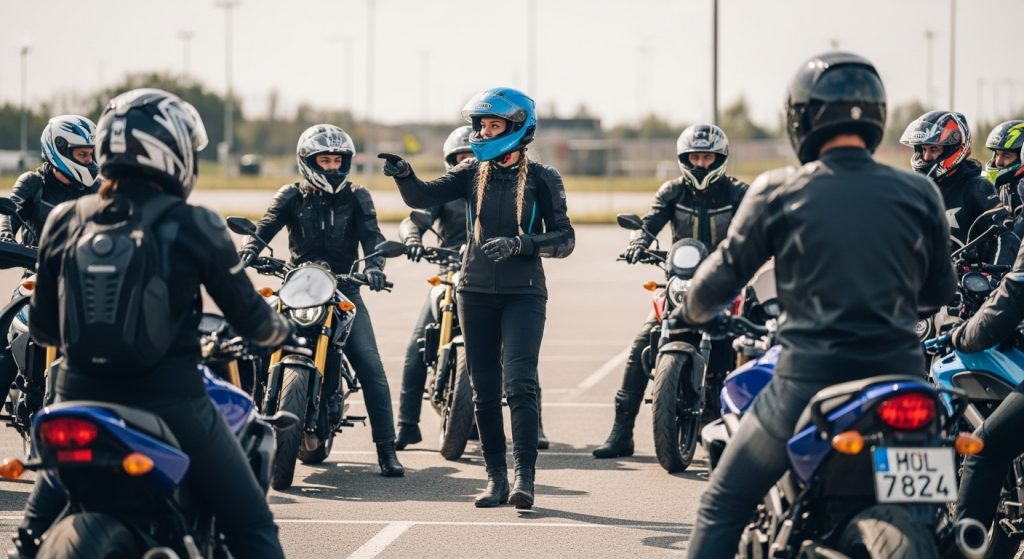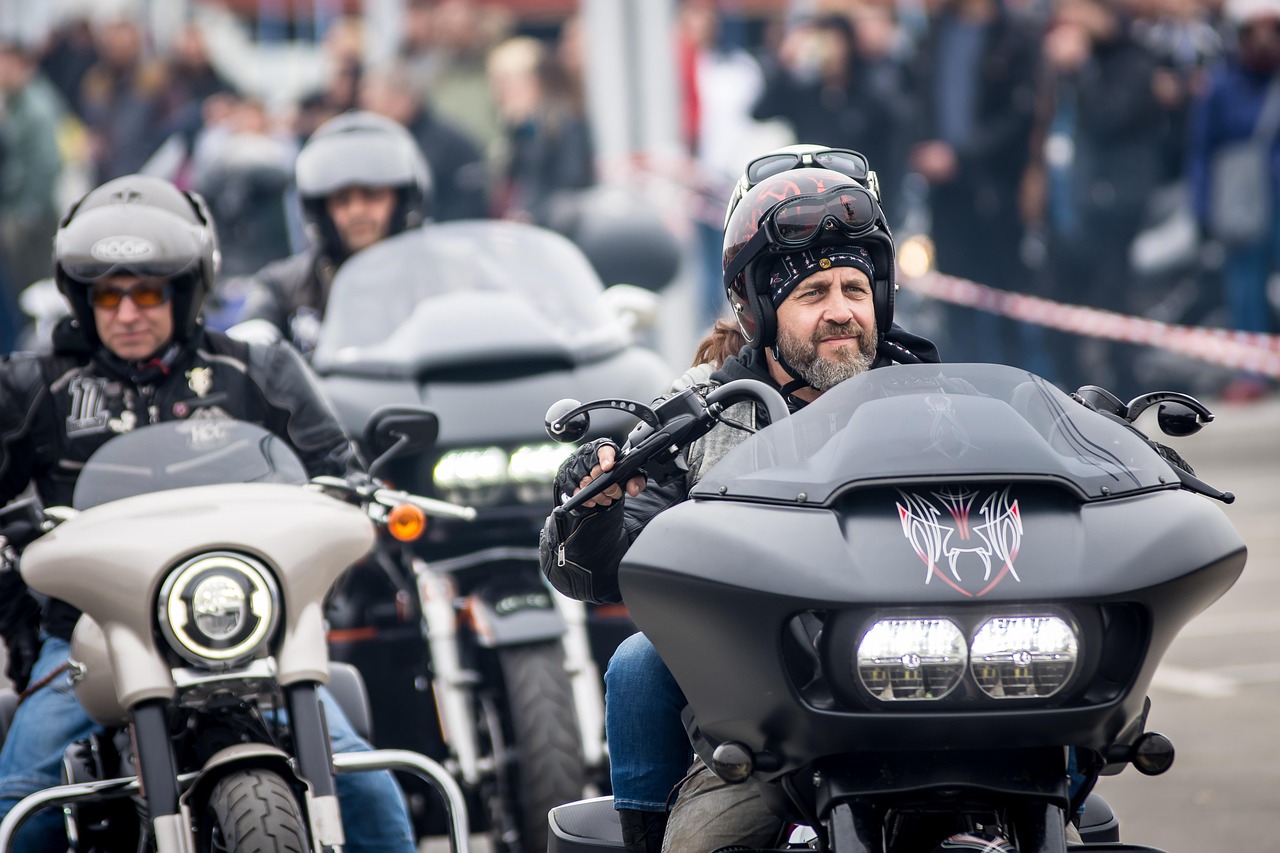Riding solo is great, but riding in a group feels different. I remember my first group ride clearly. I felt more confident, like there was a protective dome around me. After the ride, we had a quick huddle. Some of the more experienced riders gave me feedback on what I did well and pointed out a few things I could work on. It wasn’t harsh. It was helpful. That made me a better rider.
Is It Safer to Ride a Motorcycle in a Group
Riding in a group makes you more visible to other drivers, which lowers the risk of getting overlooked in traffic, according to the Motorcycle Safety Foundation. For me, that group dome made me feel safer. Being in a pack also made me braver. When I’m solo, small mistakes can throw me off and ruin a ride. In a group, I can work through those mistakes and keep going.
Group rides also come in handy when things go wrong. Once, my bike broke down mid-ride. I saw firsthand how quickly a group can rally to fix a problem. That’s not something you get when riding alone.
But group rides only work when everyone is on the same page. I’ve been on a ride where bad communication caused an accident. Two riders collided because of a missed hand signal. Thankfully, we were going slowly, and injuries were minor. That moment taught me something important. Every rider needs to know what each signal means. Don’t assume. Meet, review, and confirm signals before hitting the road, according to the Montana Motorcycle Safety Foundation. Pre-ride meetings and clear signals are a must for safe group riding.
Thinking about joining a group ride, but not sure where to start? Check out my article:
In this article, I share must-know safety tips, group riding etiquette, and how to plan for all skill levels. Read it now and ride smarter with your crew.

Is Group Riding Safer for Beginners
Group riding is one of the best ways for beginners to build confidence and learn from experienced riders, according to the Montana Motorcycle Rider Safety Program. I think beginners should ride in a group first. Riding solo right away can be overwhelming. Group rides helped me build confidence, especially in different weather conditions. Watching how seasoned riders handled rain, wind, and corners was like getting a live lesson.
But you have to join the right kind of group. Beginners need a group that’s patient and willing to help, not one that treats every ride like a race.
When Riding in a Group, Riders Should
These are my must-follow rules for riding in a group:
- Follow the 3-second rule. I always stay three seconds behind the rider ahead. If the roads are wet, I stretch it to six. Keeping a safe gap is critical for reaction time, according to MSF guidelines.
- Ride in a staggered formation. The lead rider stays in the left third of the lane, the next rider follows one second behind in the right third, and so on. This formation gives each rider a clear view and enough space to maneuver safely, according to the Montana Motorcycle Safety Foundation.
- Use hand signals. After that accident I mentioned earlier, we made it a rule to review hand signals before every ride. It has saved us from dangerous situations later on. Clear hand signals reduce confusion and prevent accidents in group rides, according to MSF training.
- Have a pre-ride talk. Before every ride, I make sure everyone knows:
- Who the lead and sweep riders are.
- The route and planned stops.
- What to do if someone falls behind.
- A quick hand signal refresher so no one’s guessing.
- Who the lead and sweep riders are.
- Ride your ride. Never feel pressured to keep up if the pace feels too fast. Ride within your comfort zone.
My Favorite Part of Group Rides
For me, it’s the stops and meet-ups. That’s where you connect with people. You hear stories, meet new riders, and build a community. The ride itself is fun, but it’s those parking lot chats and coffee stops that keep me coming back for more.
Group Motorcycle Riding Safety Lessons I Learned the Hard Way
Riding with others can boost safety and confidence when everyone follows the same playbook.
Visibility and support make a difference
Group riding makes motorcycles harder to miss in traffic, according to the Motorcycle Safety Foundation, and help arrives fast if something goes wrong.
My first group ride ended with a friendly huddle and feedback. That coaching made me better.
Follow the 3‑second rule
Hold a 3‑second gap in normal conditions. Use 6 seconds or more on wet roads, per MSF guidance.
Ride in a staggered formation
Lead stays left third, next rider one second behind in the right third, alternating for clear views and room to maneuver, says the Montana Motorcycle Safety Foundation.
Use and review hand signals
Meet before the ride and confirm signals. Clear communication prevents pile‑ups during lane changes and turns, per MSF training.
Hold a quick pre‑ride talk
Cover: lead and sweep, route and stops, what to do if someone drops back, and a 60‑second signal refresher.
Ride your ride
Never chase a pace that feels unsafe. Ease off, signal, and regroup at the next stop.
Feedback made me smoother
Post‑ride huddles highlighted what worked and what to fix without pressure. That steady coaching built real confidence.
Teams solve problems fast
When my bike quit, the group diagnosed it and got me rolling again. That kind of backup is rare when you ride alone.
10 Essential Tips for Motorcycle Group Riding
Ready to plan safer rides for mixed skill levels? Read my tips on etiquette, spacing, and route planning so your crew rides smarter together.
Sources: Motorcycle Safety Foundation guidance on group riding and spacing; Montana Motorcycle Safety Foundation formation and signal practices; Montana Motorcycle Rider Safety Program beginner training advice.

